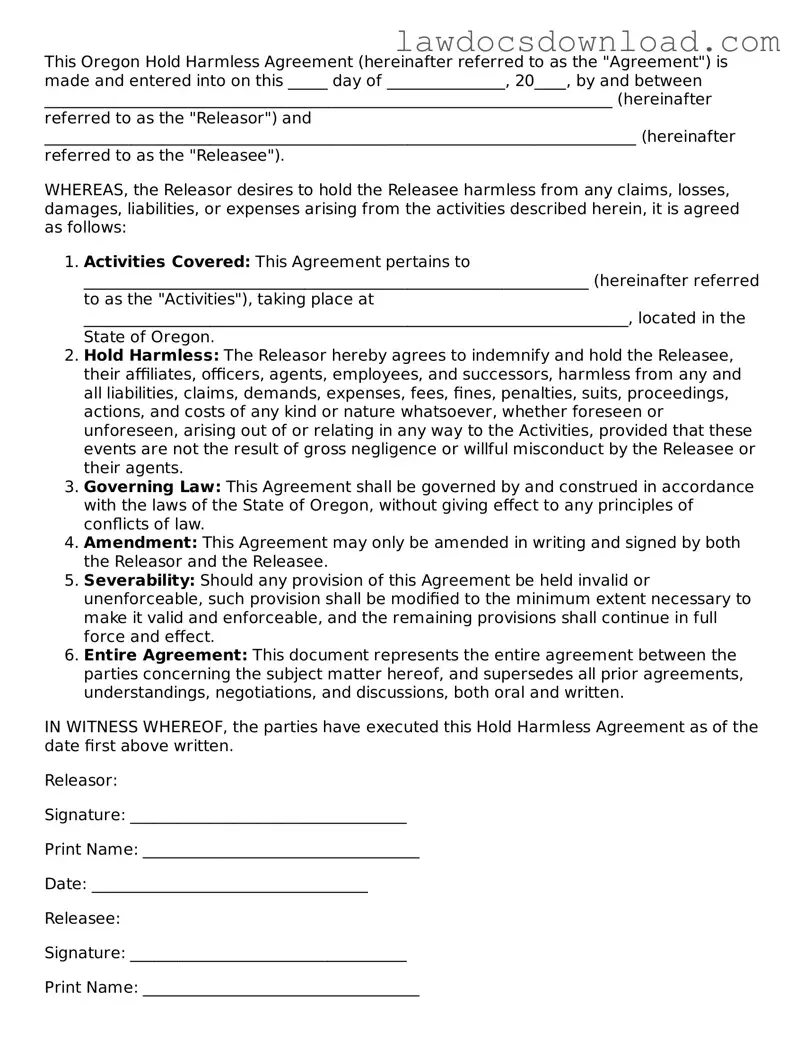This Oregon Hold Harmless Agreement (hereinafter referred to as the "Agreement") is made and entered into on this _____ day of _______________, 20____, by and between ________________________________________________________________________ (hereinafter referred to as the "Releasor") and ___________________________________________________________________________ (hereinafter referred to as the "Releasee").
WHEREAS, the Releasor desires to hold the Releasee harmless from any claims, losses, damages, liabilities, or expenses arising from the activities described herein, it is agreed as follows:
- Activities Covered: This Agreement pertains to ________________________________________________________________ (hereinafter referred to as the "Activities"), taking place at _____________________________________________________________________, located in the State of Oregon.
- Hold Harmless: The Releasor hereby agrees to indemnify and hold the Releasee, their affiliates, officers, agents, employees, and successors, harmless from any and all liabilities, claims, demands, expenses, fees, fines, penalties, suits, proceedings, actions, and costs of any kind or nature whatsoever, whether foreseen or unforeseen, arising out of or relating in any way to the Activities, provided that these events are not the result of gross negligence or willful misconduct by the Releasee or their agents.
- Governing Law: This Agreement shall be governed by and construed in accordance with the laws of the State of Oregon, without giving effect to any principles of conflicts of law.
- Amendment: This Agreement may only be amended in writing and signed by both the Releasor and the Releasee.
- Severability: Should any provision of this Agreement be held invalid or unenforceable, such provision shall be modified to the minimum extent necessary to make it valid and enforceable, and the remaining provisions shall continue in full force and effect.
- Entire Agreement: This document represents the entire agreement between the parties concerning the subject matter hereof, and supersedes all prior agreements, understandings, negotiations, and discussions, both oral and written.
IN WITNESS WHEREOF, the parties have executed this Hold Harmless Agreement as of the date first above written.
Releasor:
Signature: ___________________________________
Print Name: ___________________________________
Date: ___________________________________
Releasee:
Signature: ___________________________________
Print Name: ___________________________________
Date: ___________________________________
